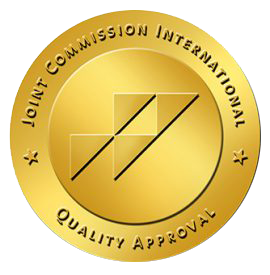When you decide to show off your legs, the last thing you want to showcase is a spidery, blue-green veins on your calves. While varicose veins can be hereditary, that doesn’t mean you’re stuck with them forever!
Varicose veins are veins close to the skin veins that appear swollen, twisted or stretched. Any vein in your body can become varicose but the veins in the legs, thighs and pelvic area particularly, are most commonly affected. Varicose veins are a common condition that is predominant among women and often get worse with age. So what causes varicose veins?
Normal person with no varicose vein:
Blood travels in your body through blood vessels; arteries carry blood from the heart to the rest of the body and veins return blood to the heart. While walking your leg muscles contract, and squeeze the deep veins pushing the blood upward to your heart and the valves, which are located inside your veins, to prevent the blood from flowing down in the wrong direction.
What’s on your legs? (A person with varicose veins)
The walls of the veins stretch and become less flexible which in turn weakens the valves and stops them from working properly, blood then leaks down and builds up in different branches of the main vein causing them to swell and become ugly looking.
The reason why your veins and valves stretch and stop working is not fully understood but common risk factors are family history, obesity, have an occupation that entails prolonged sitting or standing and pregnancy.
Varicose veins could cause:
- Aesthetic disturbances with no symptoms.
- Heaviness, leg aching and leg tiredness
- Localized pain in the areas where the veins are apparent
- Muscle cramps in the calf
- Rarely complications develop such as: Bleeding to the skin, eczema and ulcers around the ankle and exceptionally phlebitis.
Varicose veins that appear in your legs can be easily compared to the branches and the leaves of a tree while the trunk of the tree is compared to the main leaking vein called saphenous vein.
Getting rid of the visible varicose veins (i.e.: the branches and leaves) cannot be done without the destruction of the trunk of the tree (saphenous vein) if it is leaking.
The best way to tackle those tricky Varicose Veins:
To get lasting results, it is important to get an accurate diagnosis, through the help of the duplex ultrasound. Duplex ultrasound is a non-invasive evaluation of blood flow through your veins. This test examines all the veins in your leg and determines which one is leaking, its size at different locations in order to outline a custom treatment plan.
Treatment:
Your doctor might recommend one of these treatment options all performed in the clinic:
- If the saphenous vein has a normal function which means that there was no apparent leak during the Duplex Scan, then your best treatment would be injection sclerotherapy in order to destroy the unwanted veins. Upon destroying the diseased vein, the blood then re-routes into the healthy veins.
- If the saphenous vein appears to be leaking blood in a downward direction, your doctor may recommend one of the three latest treatments options for the saphenous veins: UGFS, MOCA, EVLT:
- Ultrasound guided foam sclerotherapy (UGFS): is based on forming a foam by mixing a sclerosing agent with a small amount of air. The doctor will then proceed, with the help of the ultrasound, to locate the diseased vein and inject it with the foam.
- Mechanochemical ablation using the Clarivein System (MOCA): is the latest and least invasive technique to treat diseased saphenous veins. Clarivein only requires a single injection site, allowing for a virtually pain free experience with minimal bruising and lasting results. During the Clarivein procedure, a catheter is introduced into the vein with the guidance of an ultrasound. The catheter then rotates and a chemical is sprayed causing the saphenous vein to effectively and permanently seal.
- Endovenous laser (EVLT): is performed by inserting a laser fiber directly into the saphenous vein to destroy it from the inside using laser energy. It’s far less invasive than traditional surgery and is done under local anesthetic with excellent long term results.
Your doctor will wait three months, following any of the above procedures, to allow the varicose veins to slowly disappear. If the varicose veins do not disappear after three months, then other sessions of injection sclerotherapy may be required to improve the appearance of your legs.
Follow-up visit:
It is very important to follow-up your treatment because varicose veins will progress over time at a 5% deterioration rate every year. This is why you need a follow up session with your doctor every year or two in order to keep your healthy looking legs.
Are you suffering from varicose veins? Take advantage of the various varicose vein treatments found at the Varicose Veins Clinic at Mount Lebanon Hospital which will ease your pain and restore your body confidence so you can show off your legs this summer.
Leave a reply 






